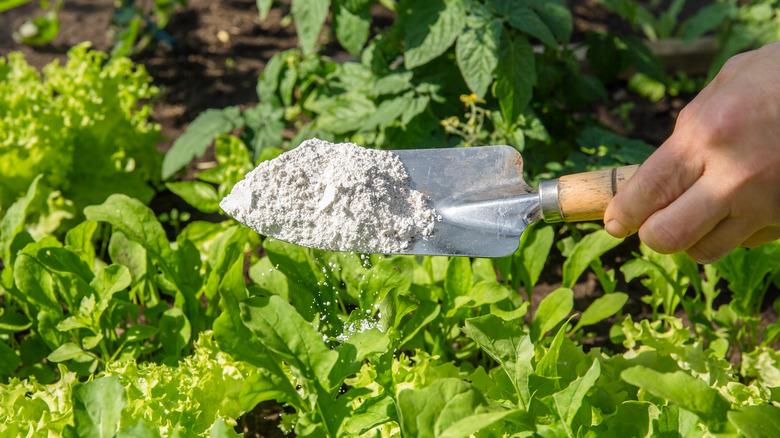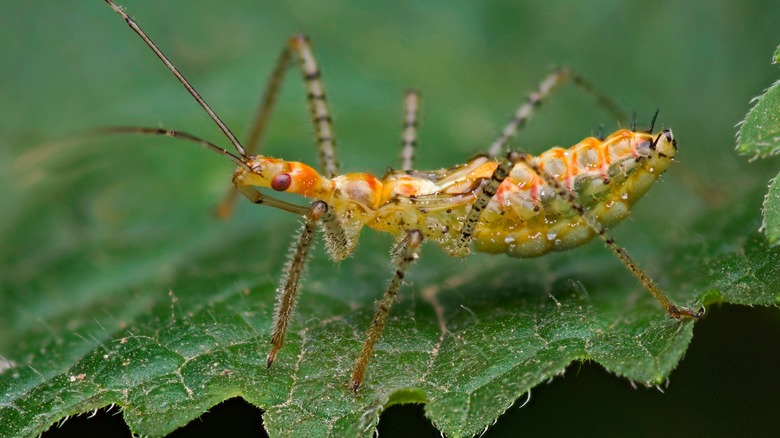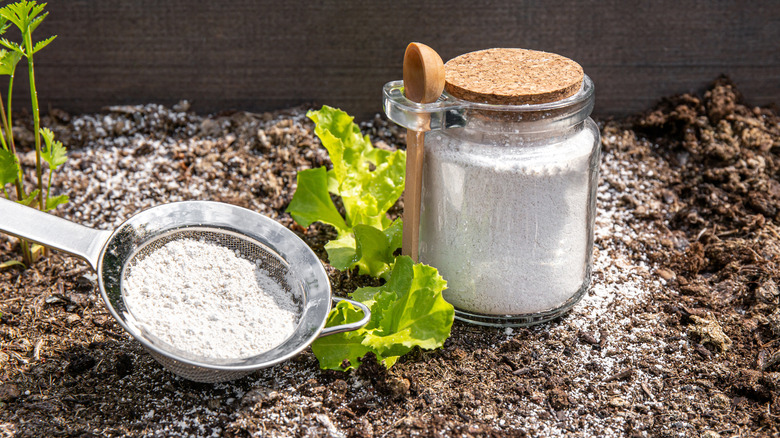This Common Gardening Item Is The Secret Weapon You Need To Banish Pesky Leafhoppers
Diatomaceous earth is a steadfast ally for keeping leafhoppers in check in your garden. This natural, powdery substance works wonders against these and other pesky insects. Comprised of the fossilized remains of aquatic organisms known as diatoms, diatomaceous earth is mostly silica — a component that is harmless to humans but lethal to insects. The magic lies in its microscopic structure; sharp enough to pierce the exoskeletons of leafhoppers, diatomaceous earth acts as a desiccant, absorbing the oils and fats from the cuticle of an insect's exoskeleton. As a result, the pests are unable to retain moisture, leading to dehydration and death.
Its non-toxic nature makes it an excellent choice for gardens, as it doesn't introduce harmful chemicals into your plants or the ecosystem. Instead, it provides a mechanical control method that is as straightforward as it is efficient. However, using it effectively for controlling leafhoppers means timing and method are everything. And although powerful, diatomaceous earth is not a catch-all solution. It won't discriminate between beneficial insects and pests, so a strategic application is necessary. You'll need to apply it with precision to affect only the targeted pests like leafhoppers to maximize your garden's health and yield.
Understanding leafhoppers
Vigilance in your garden is your first line of defense against leafhoppers — these small but destructive garden pests can cause significant damage to your plants. As you approach your leafhopper issue, observing the breeding and behavioral characteristics of these insects is crucial. Their size belies their threat; these tiny, wedge-shaped creatures, known for their quick movements and bold colors, are a force to be reckoned with.
Quick to hop from plant to plant, they also serve as carriers for various plant diseases. The trouble with leafhoppers begins when they pierce plant cells to feed on sap, compromising the plant's ability to thrive. The potato leafhopper, for instance, induces a harmful condition in plants called "hopperburn." This ailment manifests as a yellowing of leaves, stunted growth, and potentially, without intervention, the death of the plant.Leafhoppers can transmit phytopathogens that pose a more insidious threat, further imperiling the health of your garden. As they feed, leafhoppers excrete honeydew, a sticky, sweet substance that attracts sooty mold. This fungus forms dark patches on plants, blocking essential sunlight, disrupting photosynthesis, and further stressing the plant.
To counter these pests, diligent inspection of your garden is imperative. Look for tell-tale signs of leafhopper presence or damage: Check the undersides of leaves for insects or nymphs, and be aware of the stippling pattern on leaves or the presence of honeydew and sooty mold. If you notice anything unusual, this is when diatomaceous earth comes in.
Applying diatomaceous earth for leafhopper control
As mentioned, to use diatomaceous earth effectively against leafhoppers, you should apply it with precision and care. Begin by identifying the plants most affected by these pests. Look for signs of feeding, such as stippling on leaves or the insects themselves. Once you've pinpointed the problem areas, lightly dust the affected plants with diatomaceous earth, making sure to cover both the tops and undersides of leaves where leafhoppers commonly feed and rest. The goal is to create a barrier that leafhoppers must cross, ensuring they come into contact with the substance. It's best to do this on a calm day without wind to prevent drift to protect beneficial insects that may be active during application.
Reapplication may be necessary, especially after rain or watering, as diatomaceous earth loses its effectiveness when wet. Regular reapplication ensures that new leafhoppers in your garden encounter the barrier, maintaining control over the population. Additionally, consider integrating diatomaceous earth application with other garden practices, such as using beneficial insects like ladybugs, which can help reduce leafhopper populations by feeding on the eggs.
Lastly, when using diatomaceous earth, personal safety is also important. Even though it's non-toxic, the fine dust may irritate the lungs, so wearing a mask during application is a good precaution. In short, the responsible use of diatomaceous earth aligns with sustainable gardening practices, reducing reliance on chemical pesticides and promoting a healthier environment for your plants and the beneficial organisms that inhabit your garden.


